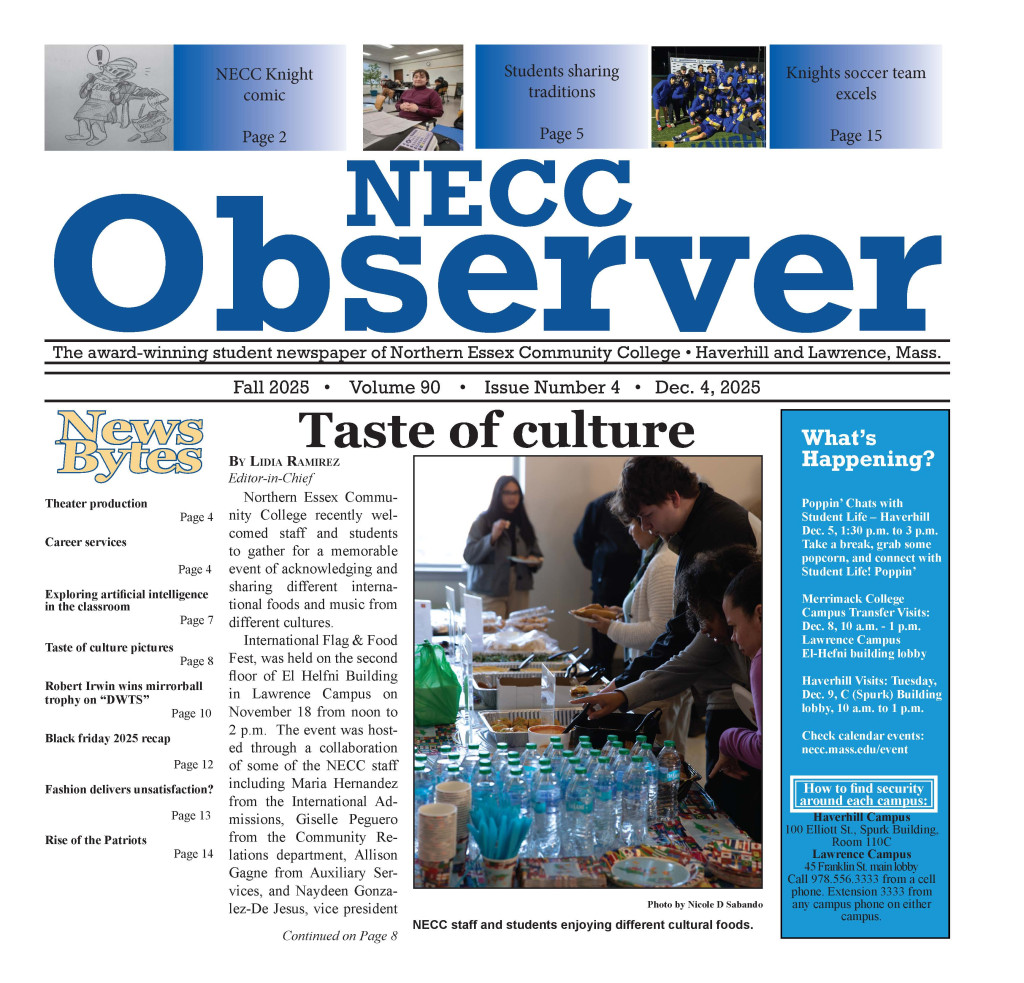My day started bright and early as always waking up at 6 a.m., letting the dog out, having a cup of Joe and going through my normal morning rituals. Might spend a little extra time with the dog because I don’t see him enough but that’s besides the point. I was excited, it was October 6th and the NENPA annual fall conference was today.
This was my first time attending since I first joined the journalism program. I attended to get a first hand look at what being a journalist is like in the real world. This time I knew what to expect, I figured we’d start the morning off with some lectures, break off for lunch and award ceremony then speakers would separate into multiple rooms and we’d choose what interested us the most. I had it down and I felt like a pro going in even though I was walking into a room full of actual professionals.
Unfortunately I wasn’t able to stay for the whole conference due to prior obligation to my work, I had to leave after the lunch, although I did happen to get some good information from other students who attended.
Every semester Amy Callahan rallies journalism students to take part in this wonderful learning environment. This semester unfortunately we had only three students come along, including myself. Although the information and the new relationships gained is what’s really important, at least for me anyway.
I arrived a little later than expected, I guess that’s what you get for trusting the traffic going into Boston, lesson learned. Luckily for myself I only happened to miss the first lecture. The second lecture seemed to catch my eye more anyway, it was titled, “Funding the Future of Journalism”. Terry Egger, the CEO of the Philadelphia Inquirer, spoke on how the power of information has changed “fifteen years ago the power was in the sender’s hand now it’s in the receiver’s hands.” He went on to say how this has changed the content for papers he has worked on. This is why he puts so much emphasis on empathy for the people they write about in the newsroom. They have to “understand the other side and see how their affected.” The tough questions come into play here when debating what specific facts might mean to persons life in a community.
I was admired by Egger, his near presence was commanding, he was impressive to say the least. I appreciated him for his fight to keep the spirit of journalism alive in the community especially when it comes to paper circulation. He mentioned that when you should price it out to a specific point to where you don’t need it then you should make the jump to just online based. Until there’s no real demand for it, you should still keep your print circulation going. “Keep it as viable as you can until the consumer says otherwise.” Not to say that digital is not important because it is the way of the future unfortunately for the print industry but papers will still survive, hopefully (crossing my fingers). He’s always trying to find a “substantial business model to keep journalism alive.”
After the meeting finished I found myself looking for the coffee bar per usual, unfortunately the only thing available was decaf. What journalist is drinking decaf coffee? None who that’s why it was completely filled. But I settled for decaf anyway and found my way to the next lecture on the epidemic of the opioid crisis.
Basically the difficulty with these stories are that there emotional and can have a big affect on their readers. Many newsrooms can receive heavy backlash (if not always) from the community if something isn’t portrayed properly in their eyes. So that’s why shame is such a big weapon for them to be using because it shows how they will use it to their advantage as featuring something as newsworthy and whether or not it applies. It can be a gamble sometimes and not everyone is going to agree upon how it is published in the news room.
The Eagle Tribune went through a heavy debate within their newsroom over a video they weren’t sure whether or not to upload. It showed a woman who overdosed in a store with her daughter crying by her side. They decided that to really show the full scope of the issue was to show the video but the next question was for how long? It is quite long for something that doesn’t need much time to get the point across but that’s the point. They wanted to make it uncomfortable because we shouldn’t feel comfortable about it. The biggest thing for them is to think like a reader in this situation and to write in terms of how it affects your staff if you’re the editor. Continued coverage of horrific and tragic stories can take a toll on any reporter.
Afterwards I met up with the rest of the group for lunch and discussed what lectures we listened in on and the information we got from it. My biggest take for myself happened to come from a women I met who works in media law named Samantha Allen. She gave me worldly advice when it came to her early days reporting on crime. You can never get down on yourself, you’re not going to stay with one paper your whole career, “that’s just not how it works anymore.”

